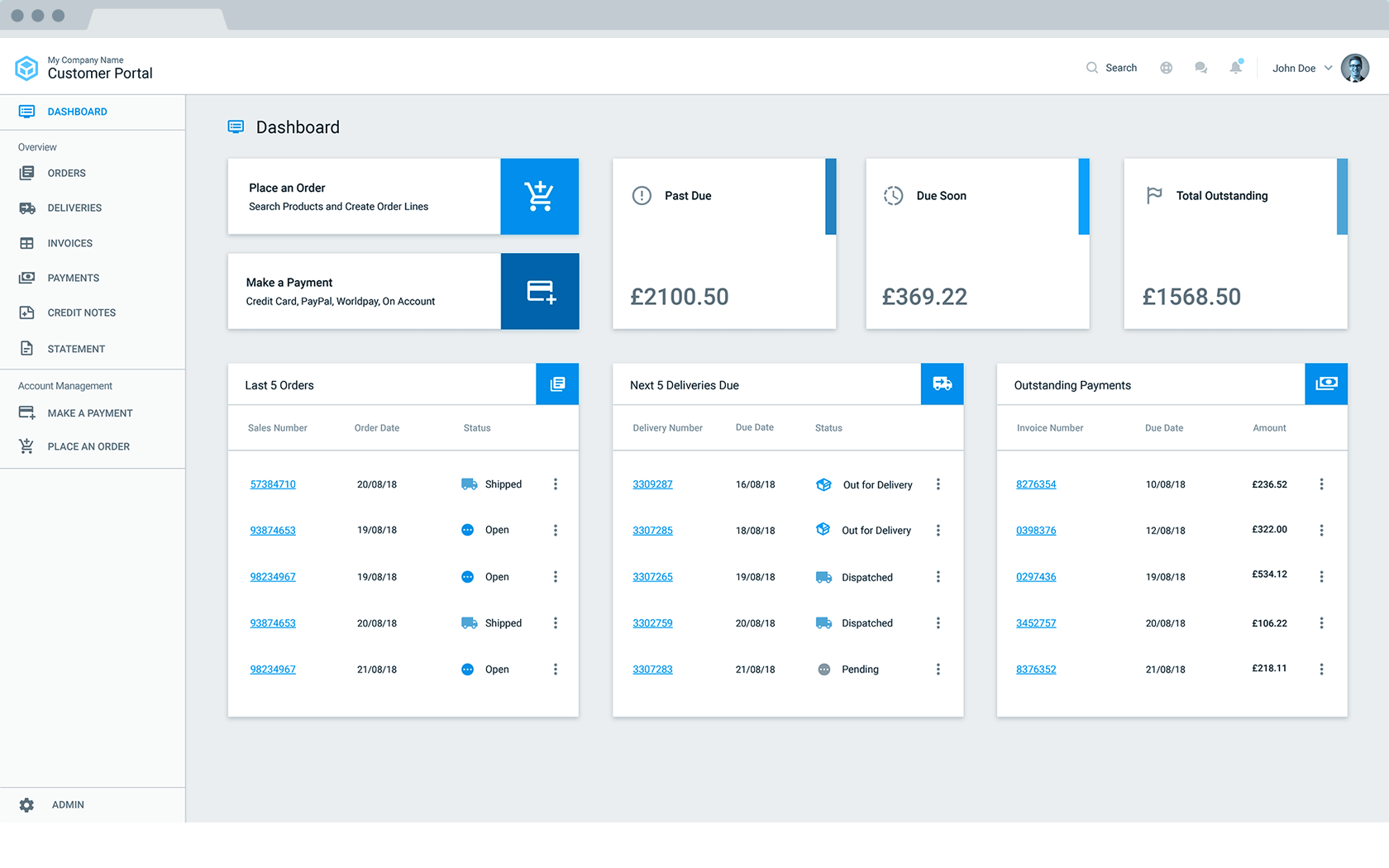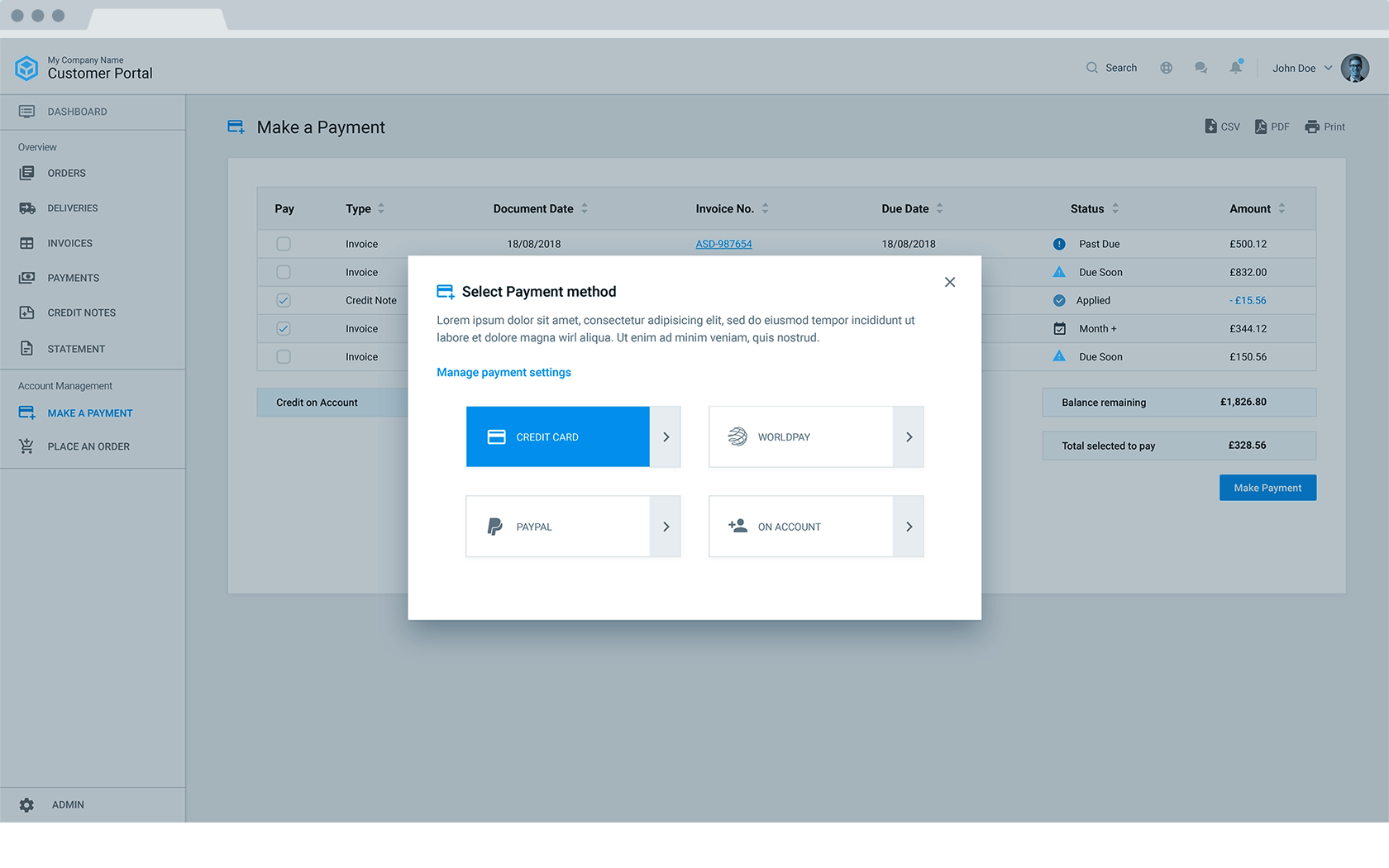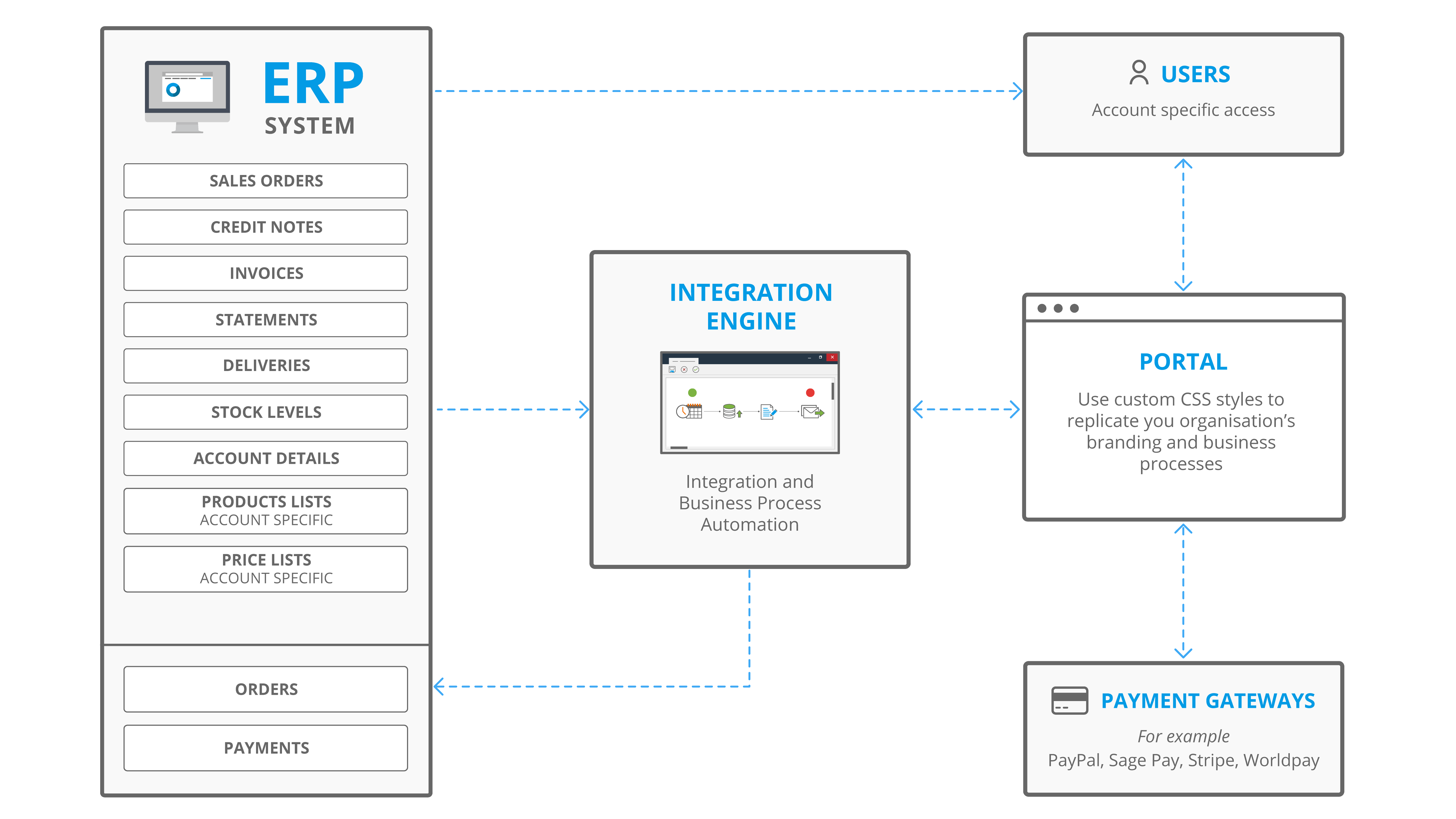What is customer portal development?
Customer portal development in a fully hosted low-code environment enables you to quickly and easily create, build and deploy branded customer portals that provide customers with access to the information they need, when they need it.
Drag and drop low-code development tools enable the custom build of business applications that can be scaled up or down to meet changing business requirements. At least 90% of applications built on a low-code platform are either ‘code free’ or only contain simple scripts for field formulas. This helps developers cut project development times and costs whilst providing the freedom to customise code in JavaScript and HTML if required.
Web portal development tools that can be used to build a customer portal often provide:
- Flexible templates to create web portals quickly
- Intuitive UX with a quick create wizard walk through
- Ability to quickly retrieve data sets from within web portals. no matter the size
- Scalable to manage any volume of users
- Customisable with custom CSS styles to replicate business branding, business processes, including read/write information with support for high load volumes
- Mobile ready on any device, in any location
- Fully hosted environment
- Telephone support
- Secure access and authentication, e.g. Secure Sockets Layer (SSL), Hyper Text Transfer Protocol Secure (HTTPS), Single sign-on, LDAP etc.
Customer portal development software benefits to a developer include:
- Improved agility
- Eliminates the need to purchase software licences, hardware, equipment and maintenance plans
- Reduced internal email traffic to source information, as well as removal of back office administration of data collected ‘off-site’ by automating data processing
- Reduced development costs and faster company ROI
- Improved productivity and development speed
- Applications are flexible and scalable
- Freedom to customise with code
- Simplify web portal integration between on-premises and cloud-based business systems and applications, e.g. ERP, accounting, CRM etc.

Customer portal dashboard example
What is a customer portal?
A customer self-service portal provides customers with the ability to securely access company information that is relevant to them. Accessible information can include policy documentation, welcome packs, invoices, orders and the ability to make online payments. A client web portal can be accessed 24/7, 365 days a year on any device, such as a desktop computer, laptop, tablet or smartphone, regardless of location.
Typically, a customer portal enables users of the web portal to:
- Access and view information: Customers can access invoices, statements, stock levels, deliveries and credit memos
- Download / view reports and documents: Customer portal users can view and download reports and documentation, such as statements, price lists, marketing material, policies and welcome packs
- Make online payments: Customers can make a payment against open documents through a payment gateway, e.g. Stripe, PayPal, Worldpay

Customer portal - online payment screen example
How customer portal software improves customer experience
The requirement for customer portal development is often driven through an increase in customer requests for real-time information, which can be the result of sudden planned or unexpected company growth.
The purpose of customer portal development is to provide customers with a secure, single point of access to information that is relevant to them and is available 24/7, 365 days a year. In return, this reduces in-bound support calls, improves customer satisfaction, enhances communication and eradicates the need for repetitive bi-directional data entry.
The way a customer interacts with a business has gradually changed overtime. It’s now common place for a customer to be self-sufficient in data gathering, reviewing and signing documents, raising support tickets and arranging online payments. A customer portal therefore facilitates this requirement and enhances collaboration between the business and its customers.
There are several customer and business driven factors as to why an organisation will look to develop a customer portal, some of which are listed below:
- Reduce paper wastage by sharing documentation in PDF or MS Word format, e.g. welcome packs, policies, warranties etc.
- Reduce inbound support call volume with the ability to log support tickets online
- Improve access and visibility to invoices and quotes
- Increase cash flow by allowing customers to arrange online payments
- Provide customers with the ability to place orders online and track deliveries
Web portal integration
Web portal integration provides organisations with the ability to bridge the gap between on-premises and cloud-based business systems and applications, enabling them to ‘speak to each other’ and transform data to ensure that it is always compatible with the recipient system or application. Using drag and drop low-code integration tools, as well as, in some instances, pre-defined templates, system integration facilitates the mapping and configuration of objects and fields within a business system or application.
A low-code integration engine provides the ability to connect to practically any database source, such as ODBC, OLEDB and third-party connectors, that utilise APIs or SOAP and RESTful web services that are found in most business systems and applications.

Web portal integration example using an integration engine
Common web portal integration scenarios include:
- ERP integration: SAP Business One, Microsoft Dynamics NAV / 365 Business Central, Sage 200 / 300 / 1000 / X3, Epicor, SYSPRO, Access Dimensions etc.
- CRM: Salesforce, Sugar CRM, Infor CRM, MS Dynamics etc.
- eCommerce: Shopify, Magento 2, BigCommerce, Amazon Marketplace, eBay etc.
- Operations: EDI, warehouse management (WMS), MRP etc.
- Financial: SAP Concur, GoCardless, Stripe, PayPal Worldpay etc.
- Courier services: DPD, FedEx, Royal Mail, Parcelforce etc.
- File / database integration: XML, TXT, CSV, MySQL, Oracle etc.
Customer portal features
When researching the market for an easy-to-use customer portal development platform there are several features that should be taken into consideration. Typical customer portal features to take into consideration include:
- Secure access, including Secure Sockets Layer (SSL), Hyper Text Transfer Protocol Secure (HTTPS), Single sign-on, LDAP, IP whitelists and Password Expiration Policies
- Flexible web portal templates to help speed development time
- Drag and drop low-code development tools
- Mobile ready for 24/7 access, regardless of location or device
- Fully hosted environment
- Ability to retrieve data sets from within customer portals, regardless of the size
- Custom CSS styling
- Advanced integration engine to facilitate integration between on-premises and cloud-based systems and applications
Customer portal benefits
Customer portals enable an organisation to streamline its approach in the way that it communicates and interacts with its customers. A customer portal enables customers to contact an organisation out of hours when it’s convenient for them. In return, organisations are less reliant of funding additional resources to extend employee working hours or increasing employee head count. Additional benefits that can be achieved by implementing a customer portal include:
- Reduced operations costs
- Increased visibility of critical information
- Simplified access to account information
- Streamlined administration and data-entry tasks
- Improved customer experience and satisfaction
- Increased customer retention levels
- Stronger cash flow
- Scalable IT licensing and maintenance options
- Improved communication internally and externally
- Reduced inbound telephone calls and customers on hold
Customer portal development next steps
For more information on customer portal development and how it can help improve customer satisfaction, download the brochure below or call us on +44 (0)330 99 800 50 to get your project started.

